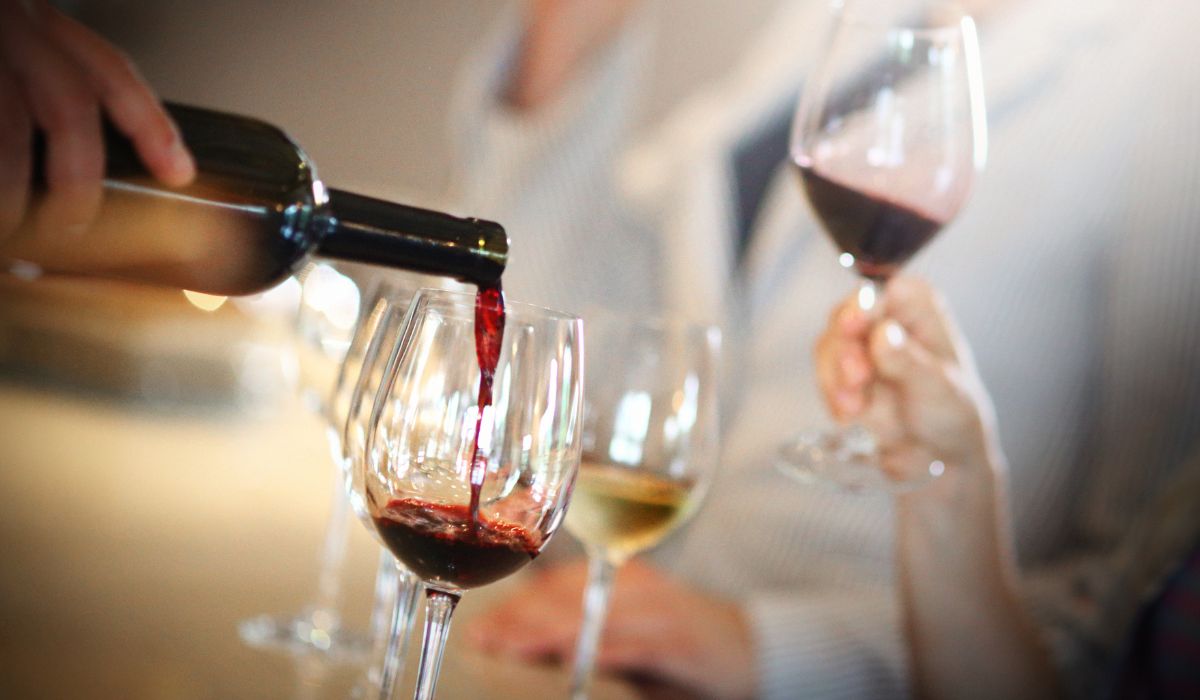Welcome to the world of wine, where every sip is an experience worth savoring. Whether you’re a passionate winemaker or a dedicated connoisseur, one thing remains certain: the success and sustainability of your wine business rely on effective inventory costing strategies.
Protea Financial wants to explore two key methods to propel your winery toward growth and ensure its long-term viability. But before we explore these strategies in depth, let’s take a moment to understand why inventory costing is crucial for businesses in the wine industry.
As any seasoned vintner knows, producing exceptional wines requires meticulous attention to detail at every stage of the process. From selecting the finest grapes to carefully aging each bottle, quality comes at a cost. And that’s where inventory costing enters the picture – it allows you to accurately assess production expenses and make informed decisions about pricing and profitability.
Let’s uncork the secrets behind successful wine inventory costing strategies! Whether you’re working with small-batch artisanal creations or larger volume productions, there’s something here for everyone seeking growth and sustainability in their ventures. Grab your favorite glass of red or white as we embark on this journey together!
Understanding Specific Identification Costing
Regarding inventory costing in the wine industry, one method that stands out is Specific Identification Costing. This wine costing approach involves assigning a unique cost to each individual bottle or batch of wine based on its specific production costs. It’s particularly suitable for wineries engaged in smaller productions or those specializing in unique and limited-edition bottles.
- One of the key advantages of Specific Identification Costing lies in its ability to provide precise cost tracking. By accurately allocating costs to each bottle, wineries gain valuable insights into their production expenses and can make more informed pricing decisions. This level of precision ensures that prices are set at a level that reflects the product’s true value while still allowing for profitability.
- Furthermore, this method enhances a winery’s ability to identify which products are profitable and which may fall short. With detailed cost tracking, it becomes easier to determine if certain varieties or vintages need to yield more returns. Armed with this knowledge, winemakers can adjust their production strategies accordingly and focus on maximizing profitability.
- By implementing Specific Identification Costing, wineries can develop better pricing strategies based on accurate cost data for each bottle produced. This helps maintain healthy profit margins and allows businesses to position themselves strategically within the market.
Specific Identification Costing offers unique benefits for business growth within the wine industry by providing precise cost-tracking capabilities and enabling wineries to identify profitable products more effectively. So, if you’re looking for an inventory costing strategy that seamlessly brings accuracy and profitability together, consider incorporating this method into your operations today!

Exploring Standard Costing
Standard costing is a widely used method in the wine industry, especially for businesses that produce wines on a larger scale with regular bottlings. This cost accounting technique provides several benefits that contribute to the sustainability and growth of wineries.
- One major advantage is the streamlined budgeting process and improved financial planning. With standard costing, wineries can establish predetermined costs for each production unit, making it easier to track expenses and allocate resources effectively. This allows businesses to make informed decisions regarding pricing strategies, sales projections, and overall profitability.
- Another benefit of standard costing is its ability to facilitate bulk purchasing and economies of scale. Wineries can leverage their buying power to negotiate better prices with suppliers by determining standard costs based on anticipated production volumes. This ultimately leads to cost savings and increased profitability as higher quantities are produced.
- Implementing standard costing also helps maintain consistency in product quality. By establishing predetermined standards for raw materials and production processes, wineries can consistently ensure that their wines meet specific criteria. This enhances customer satisfaction and strengthens your brand reputation over time.
Standard costing offers numerous advantages for sustainability and growth in the wine industry. It streamlines budgeting processes, facilitates bulk purchasing opportunities through economies of scale, and maintains consistent product quality standards. Wineries looking to optimize their operations should consider implementing this cost accounting method alongside other inventory costing strategies available in the market.
Strategies for Implementing Costing Methods for Growth
Choosing the right costing method is crucial for a winery’s growth and success. It all comes down to understanding your production scale and business goals. Specific Identification Costing might be the way to go for smaller productions or unique, limited edition bottles. This method allows for precise cost tracking, enabling better pricing strategies and identifying profitable products.
On the other hand, if your winery produces larger volumes or regular bottlings, Standard Costing could be more suitable. With this method, you can streamline budgeting processes and financial planning while benefiting from economies of scale through bulk purchasing.
However, it’s important not to view these costing methods in isolation. To maximize results, integrate them with your marketing and pricing strategies. By aligning costing decisions with product positioning and target market analysis, you’ll ensure a cohesive approach that drives both growth and profitability.
As your business scales up or introduces new product lines, you may need to switch between costing methods accordingly. Having inventory management software in place can help manage these transitions effectively by providing real-time data on costs and sales performance.
Remember: choosing the right costing strategy is a continuous process that requires evaluating current practices against industry trends and internal objectives. Take a step back today and assess how well your current costing methods align with your growth ambitions – contact Protea Financial for expert guidance explicitly tailored to the wine industry!

Balancing Costing Methods for Optimal Results
Finding the right costing method in the wine industry can make all the difference in achieving business growth and sustainability. While Specific Identification Costing is ideal for smaller and limited-edition bottles, Standard Costing works well for larger volumes and regular bottlings. But what if your winery has a mix of both?
It’s important to balance these costing methods based on different product lines to achieve optimal results. Using Specific Identification Costing for unique or limited-edition wines, you can accurately track costs and identify the most profitable products. On the other hand, implementing Standard Costing for more significant volume wines allows you to streamline budgeting processes and take advantage of economies of scale.
As your business scales, you may need to switch between costing methods. This could mean transitioning from Specific Identification Costing to Standard Costing as production volumes increase or vice versa when focusing on more specialized batches. The key is flexibility and adaptability, ensuring that your costing strategies align with your evolving business goals.
Inventory management software plays a crucial role in managing these costing strategies effectively. It helps automate cost-tracking processes, provides real-time visibility into inventory levels, and facilitates seamless transitions between different costing methods. You can make informed decisions about pricing, purchasing, and resource allocation with accurate data.
Finding the right balance between Specific Identification Costing and Standard Costing is essential for maximizing profitability while ensuring operational efficiency. Evaluate your current practices today to determine how these strategies can be integrated seamlessly into your winery’s operations.
Want to learn more about wine inventory costing strategies? Contact Protea Financial now! Our bookkeeping experts specialize in helping wineries grow their businesses sustainably by implementing effective cost-tracking techniques tailored to their unique needs.
Learn More About Wine Inventory Costing Strategies from Protea Financial
In order to thrive and grow in the competitive wine industry, choosing the right costing strategy is crucial. Whether you have a small boutique winery or a larger production facility, understanding and implementing effective inventory costing methods can make all the difference.
At Protea Financial, our experts specialize in helping wineries optimize their financial processes for maximum business growth and sustainability. We understand that each winery is unique, with its own set of challenges and goals. That’s why we offer tailored solutions to meet your specific needs.
Contact Protea Financial today and let us help guide your winery toward deeper understanding and higher levels of success. We can’t wait to hear from you!



